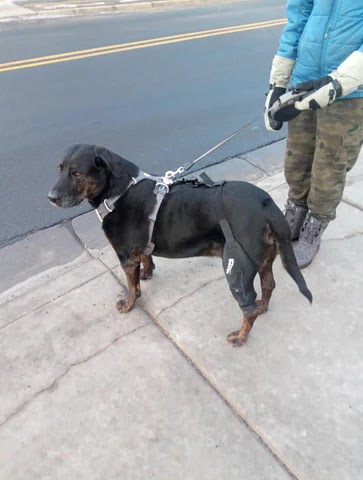Side
Effects and Risks of Dog Knee Braces
Dog knee braces can be beneficial for providing support,
stability, and pain relief to dogs with knee injuries or conditions. it is necessary
to be aware of side effects and probable risks associated with their use. While
dog knee braces are generally safe
and well-tolerated, understanding these concerns can help pet owners make
informed decisions regarding their dog's treatment. Here are some of the
potential side effects and risks to consider:
Skin
Irritation:
One
of the common concerns with dog knee braces
is the possibility of skin irritation or chafing. The brace's material,
especially if not breathable or properly fitted, can rub against the dog's skin
and cause discomfort or skin issues. To minimize the risk of skin problems, it
is essential to choose a well-fitting brace made from high-quality, breathable
materials. Regular cleaning and proper maintenance of the brace can also help
prevent skin irritation.
Restricted
Movement:
While
a dog knee brace
provides support and stability to the knee joint, it also restricts the dog's
range of motion to some extent. This restriction is necessary to prevent
excessive movement and protect the injured joint. However, it is important to
strike a balance between providing support and allowing natural movement. Dogs
wearing knee braces should still be able to walk, sit, and lie down
comfortably. Monitoring the dog's mobility and consulting with a veterinarian
can help ensure the brace is not overly restricting their movement.
Muscle
Atrophy:
Prolonged
use of a dog knee brace,
especially if the dog relies heavily on it for support, may lead to muscle
atrophy in the surrounding leg muscles. This can occur if the dog becomes
overly dependent on the brace and does not engage in regular exercise or
rehabilitation. To prevent muscle atrophy, it is crucial to incorporate
appropriate exercises and rehabilitation protocols recommended by a
veterinarian or a rehabilitation specialist. These exercises can help maintain
muscle strength and prevent muscle loss.
Discomfort
or Disruption of Natural Gait:
Some
dogs may initially experience discomfort or find it challenging to adjust to
wearing a knee brace. It may alter their natural gait or cause temporary
changes in their movement pattern. This adjustment period is normal, and most
dogs adapt to wearing the brace with time. Proper fitting, gradual acclimation,
and positive reinforcement can help the dog become more comfortable and regain
a natural gait while wearing the brace.
Allergic
Reactions:
In
rare cases, dogs may have allergic reactions to the materials used in the knee
brace, such as latex or certain synthetic materials. It is important to be
observant for any signs of allergic reactions, including redness, swelling,
itching, or excessive licking around the area where the brace is worn. If any
allergic reactions are suspected, the brace should be removed, and veterinary
guidance should be sought.
Incorrect
Use or Improper Fit:
One
of the significant risks associated with dog knee braces
is the potential for incorrect use or improper fit. If the brace is not
properly fitted, it may not provide adequate support or may cause discomfort.
It is crucial to follow the manufacturer's guidelines for fitting and adjusting
the brace or seek professional assistance from a veterinarian or a certified
orthotist. Regular monitoring and adjustment of the brace as the dog's
condition changes are also important to ensure optimal effectiveness and
minimize risks.
While
the potential side effects and risks exist, they can be minimized or avoided with
proper selection, fitting, and monitoring of the dog knee brace. Working closely with a veterinarian or a specialist is
crucial to address any concerns and ensure the best possible outcome for the
dog. Each dog's situation is unique, and a personalized approach is essential
to manage risks and optimize the benefits of using a dog knee brace.
In
summary, dog knee braces can have side effects and risks, including skin
irritation, restricted movement, muscle atrophy, discomfort, allergic
reactions, and improper use or fit. However, with proper selection, fitting,
monitoring, and veterinary guidance, these risks can be mitigated, and the
benefits of using a dog knee brace
can outweigh the potential concerns. Always consult with a veterinarian or a
specialist to determine the most suitable treatment plan and to address any
concerns related to the use of a dog
knee brace.










